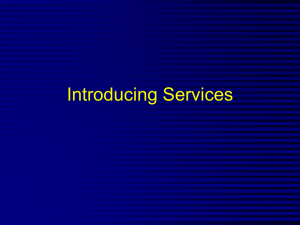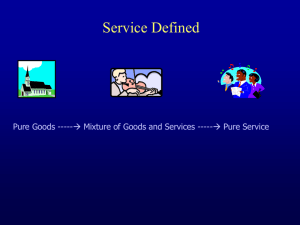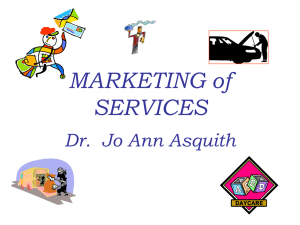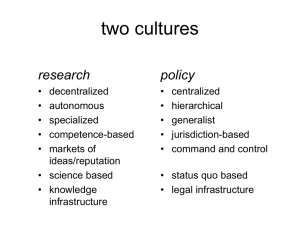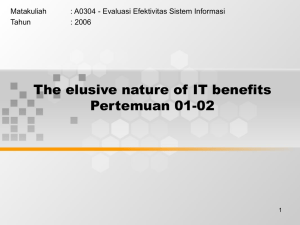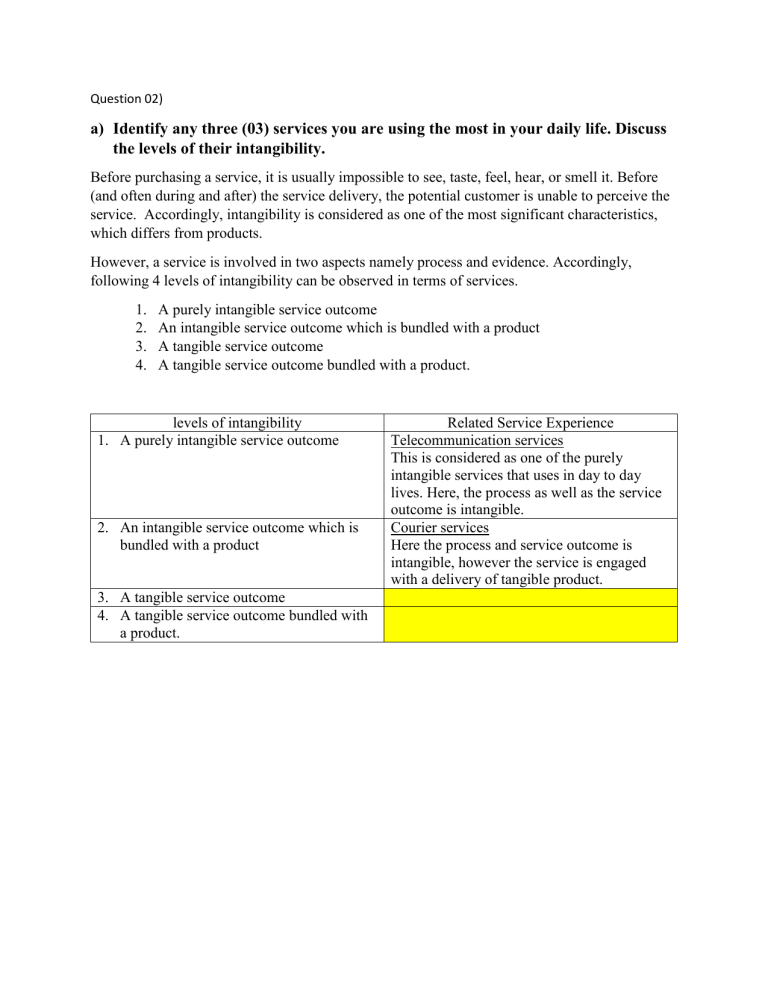
Question 02) a) Identify any three (03) services you are using the most in your daily life. Discuss the levels of their intangibility. Before purchasing a service, it is usually impossible to see, taste, feel, hear, or smell it. Before (and often during and after) the service delivery, the potential customer is unable to perceive the service. Accordingly, intangibility is considered as one of the most significant characteristics, which differs from products. However, a service is involved in two aspects namely process and evidence. Accordingly, following 4 levels of intangibility can be observed in terms of services. 1. 2. 3. 4. A purely intangible service outcome An intangible service outcome which is bundled with a product A tangible service outcome A tangible service outcome bundled with a product. levels of intangibility 1. A purely intangible service outcome 2. An intangible service outcome which is bundled with a product 3. A tangible service outcome 4. A tangible service outcome bundled with a product. Related Service Experience Telecommunication services This is considered as one of the purely intangible services that uses in day to day lives. Here, the process as well as the service outcome is intangible. Courier services Here the process and service outcome is intangible, however the service is engaged with a delivery of tangible product. b) Service design is a method by which designers develop long-term options and ideal environments for both consumers and service providers in specific situations. Designers divide services into parts and customize fine-tuned implementations to meet the needs of all consumers in context, considering participants, location, and other considerations. Service Design is a multidisciplinary approach that incorporates a variety of techniques and disciplines. It's still developing as a method and an area. These are the few approaches to redesign a service process of an organization. User Centred – The services can be seen from the perspective of the client. Use qualitative analysis to create a template that is inclusive of all consumers. Co-creative – The service creation framework should include all stakeholders. Participate in the design process for all related stakeholders. Sequencing – The service can be seen as a series of interconnected tasks. Dividing a large service into different processes and customer journey parts is a good idea. Evidencing – Physical artifacts can be used to represent intangible services. Create service environments that people can relate to in order to better appreciate and trust brands. Holistic – The whole service ecosystem should be considered. Design across all touchpoints through experiences, user networks, and interactions. Designers are primarily focusing on services rather than actual goods. Meanwhile, as new technology continues to redefine what consumers should expect as they work against their objectives, companies are focusing on improving functionality and removing obstacles for their customers.

